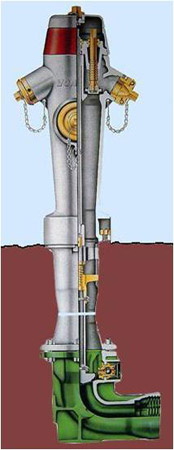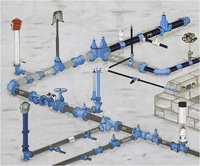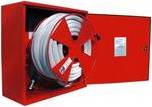Hydrants and extinguishing water outlet points
For delivering firewater on-site
The selection of a suitable system depends on a wide range of different factors
Hydrants are used by the fire brigade and rescue services on-site to retrieve extinguishing water. However, pillar hydrants can also be used as an emergency water supply.
The selection of a suitable system depends on a wide range of different factors. ACCURO offers complete fire protection solutions to its renowned customers in system and power plant construction and is therefore well-versed in this complex field. Many years of experience have allowed us to build-up excellent credentials and broad expertise.
Pillar hydrants

Pillar hydrants (see images) are most commonly used. In case of spatial constraints, underground hydrants are assembled and completely sunk into the ground.
The models may be different depending on country specifications. In most cases, every pillar hydrant has two to three valves. The main valve is operated in the middle. This is attached deep within the hydrant to protect against frost. A side valve is located on both the left and the right. On the side valves, couplings are used to connect the fire brigade hoses (e.g. Storz couplings). After opening the main valve, the water will flow to the side valves and will only be released once the side valve has been opened.
Underground pipes for the extinguishing water supply

In addition to cast iron pipes, ACCURO also specialises in the use of polyethylene underground pipes.
Polyethylene is distinguished by durability and a high resistance to environmental influences. The main water supply pipe essentially serves as the main artery for every water extinguishing system. A long material service life and a high flexibility against mechanical influences are extremely important. The water outlet points connected to the main pipe are largely located above-ground and can be exchanged, maintained and renewed relatively easily. However, if a digger is required to exchange a leaking main pipe, this will be very expensive and can particularly cause disruption to business and transport processes.
The FM-approved polyethylene pipeline system has significant advantages in comparison to steel pipelines. A simple and uncomplicated laying procedure is just one such advantage.
Important advantages of the polyethylene pipeline system:
- Flexibility and therefore lower risk of a leakage
- Corrosion resistance
- A service life of more than 50 years can not be surpassed by any other material

We advise you on the various extinguishing systems
Contact us:



